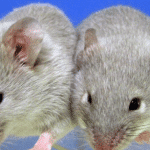We’ve talked a lot on this blog about how to start habits, touching on a little bit of the mindset and some methods to help ingrain those new, good habits that you want to adopt. While creating new habits is incredibly tricky — sometimes incredibly frustrating even — there is still the question of, what about my other habits? The ones that I have already that don’t do me any good? Those bad habits need to go, to make yourself a more self-aware individual and to help you grow into the person that you are capable of. If you’re having trouble getting rid of your bad habits, take a quick look here to see if these tips can help you get back on track.
Replace your bad habits with good ones.
This seems really obvious now, but sometimes you need to have someone tell you. Just replace your bad habits, with good ones. It’s almost as easy as it sounds. I used to sit and do my homework and thesis project after my kids went to bed and until I passed out. I could work for about 4 straight hours before I would fall asleep at my keyboard from sheer exhaustion. One day, I realized that I didn’t sleep unless I was coming down off a sugar high and decided that that was enough. I replaced all my sodas with caffeinated teas and set myself a time to be in bed by. A half hour before I was to lay down, I traded my caffeine teas for a heavy duty sleepy-time tea.
You know what happened? Everything shifted. I wasn’t as exhausted because I actually slept in my bed. I started reading at night in the half hour before my tea kicked in and I actually started reading for fun, even beyond the 200+ pages a week I had to read through for my Literature degree. My understanding of my reading assignments improved dramatically and I could better articulate my ideas. The transition between the sodas and the teas was almost instantaneous because I was already drinking something regularly throughout the evenings, they were just replaced with something significantly better for me.
Finding your trigger.
Bad habits, like good habits, are generally created by a cue. This “cue” can be something small, like sitting down on your couch and picking up your phone instead of going to do your work back in your office. It’s been a long day, and you deserve a minute to rest, right? Except that minute turns into a few hours and a long trip down the YouTube rabbit hole. On the upside, I now know the basics of creating a Gameboy with an Altoids tin. This is a big cue for me, so I have to avoid my couch as soon as I get home. I’ve started hanging my purse by my work desk. This forces me to physically see my workspace as an opening for some free time comes into view. It’s harder to avoid a good habit when it’s staring you in the face.
Identify your emotions as a consequence of these bad habits.
On the other side of that coin, you have the emotions that come up when you do fall into the trap of your old, bad habits. You know what you’re doing is terrible for you. You really want to do everything that you can to STOP DOING THE THING NOW, PLEASE BRAIN. Learning to identify the negative emotions and knowing that they are consequences of these bad habits can create a mental shift that can bring you away from them. This can work for stress eating and social media. Feelings of shame, jealousy, inadequacy, and isolation can form as a result of surfing your Facebook feed, NOT from you. Knowing the cause of these terrible feelings can help to motivate you to step away from the habits that cause you to feel that way.
Bad habits can feel like a daunting task, something impossible to overcome. The truth is that it is possible. Your brain doesn’t have control over you. By simply understanding how your brain works, you can have the upper hand in banishing your harmful and destructive habits from your life for good. Know that even if you stumble or fail, you can try again, learning from each failure and coming back at the problem head-on. Don’t give up and you’ll find that on the other side, you’ll be a stronger, better you.
















